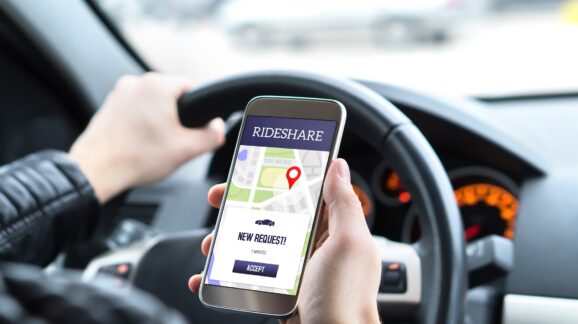As Gas Prices Rises, Ridesharing Industry Adjusts

Photo Credit: Getty
Rideshare companies are currently feeling the pinch from high gas prices, but some of their drivers are weathering the change better than others. High gas prices have made driving a lot less attractive for those who did it mainly as an occasional side hustle, but many drivers who do it full time say they’re benefitting from the decline in competition.
“It’s actually giving me a lot of opportunities for better. … I get more opportunities now,” rideshare driver Richard Rowe told San Diego public broadcasting station KPBS.
“With gas at an all time high discouraging drivers, I am constantly busy,” said poster “Yomann” on Uberpeople.net, an independent social media website for rideshare drives. “Sure I spend more on gas, but my profits have been at an all-time high during the past 4 weeks.” Others on the same thread said they were able to clear $15-20 hour after expenses.
Gas prices are currently just shy of $5 a gallon, the highest level it has ever been according to AAA. That’s been a major shock to the economy, with the rideshare industry especially feeling the impact, since it directly cuts into most drivers’ bottom lines. Uber and Lyft added new gas fees on to customers’ charges—35 cents per trip for Uber and 55 cents for Lyft—that go to drivers to help offset the cost of gas. For many that still isn’t enough. CNBC reported in April that half of all drivers have cut back or dropped out altogether, citing a poll conducted by rideshare blogger Harry Campbell.
Fewer drivers is bad news for Uber, Lyft, and the other app-based rideshare companies, since their business model relies on having large numbers of drivers available in a given area. That reduces wait times for passengers and creates competition among drivers.
Not all drivers are alike, however. The “gig economy” nature of ridesharing means that drivers decide when they work, and that can vary a great deal. A 2020 poll of its California drivers conducted by Uber found that only about a quarter of all drivers were using its app for 25 hours or more a week. About two-fifths of the drivers were on the app for just 10 hours or less. The ones who drove for 25 or more hours accounted for more than half of all trips made through the app. In short, a minority of full-time drivers were doing a majority of the driving. The rest were just doing it here and there for a few extra bucks.
A person who only drives occasionally will be quick to drop out if the economics of it start working against them. Full-time drivers are more inclined to try to ride out shifts in the economy, since driving is their main form of income. They are also more likely to have figured out the most lucrative routes and times for driving and to drive more fuel-efficient cars.
“Gas price doesn’t matter. It’s your own net profit,” argued Uberpeople.net poster “wallae,” who said they only drove during “surge” pricing periods when Uber pays more. San Diego driver Rowe attributed his success in part to the fact that he drove a Tesla and it only cost him $30 a day to charge it.
None of this is to say that high gas prices aren’t bad. It has taken away from many a lucrative side-gig that helped them weather the COVID-19 pandemic. But the free market is creating opportunities for others and they’re adjusting to it.